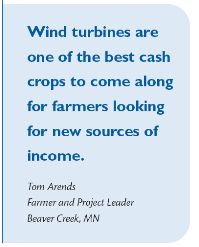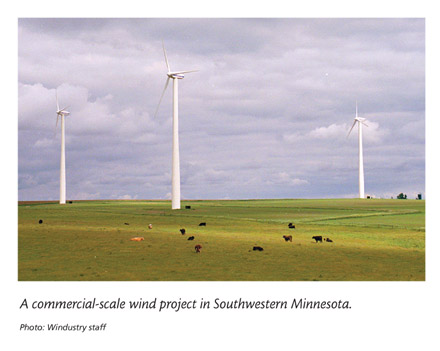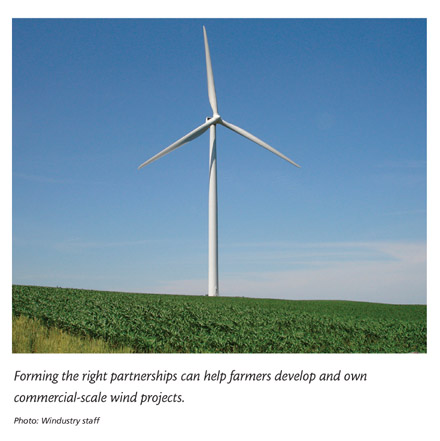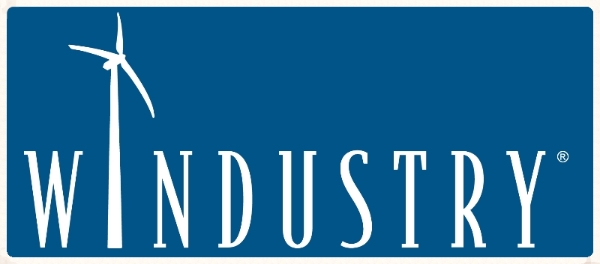The Minnesota Flip business model was developed in response to a unique combination of federal incentives for wind development and state policies that encouraged development of community-owned wind projects. The structure has proven a successful model for landowners and equity investors interested in partnering in the development of wind projects. This partnership allows the equity investor to take advantage of federal tax credits, while providing local owners the economic benefits of ownership.
The purpose of this section is to provide a basic understanding of how the Minnesota Flip model works. The main topics covered here include:
- Basic Elements
- LLC Structure and Purpose
- Ownership Rights
- The Flip
- Capital Contributions
- Distributions and Allocations
- Project Management
- Other Issues
Basic Elements of the Minnesota Flip Business Model
Wind projects can involve a sophisticated and complex set of interrelated decisions and agreements between all participants, and the decision to use the Minnesota Flip business model is just one of many important decisions affecting the financing and legal structure of a wind project. The Minnesota Flip model is a business structure developed to allow local owners, including landowners, to own a significant portion of a wind project, while partnering with an equity investor that can use the federal production tax credits (PTCs) generated from the operation of a qualifying wind project. Under this model, a project limited liability company (LLC) is formed to own and operate the wind project. The LLC owners include the tax equity investor and another LLC that is made up of local owners. In many cases, the equity investor will reimburse the local owners for their expenses incurred in completing pre-development activities, including permits, wind studies, interconnection and transmission studies, and finance the acquisition of wind turbines and construction of the project. The LLC agreement will allocate the wind project’s governance and financial rights between the participants, who determine a date when the ownership “flips” so that local owners have a controlling interest in the project for the remainder of the project’s life. The project is often structured so that the equity investor has a controlling interest in the project for at least the first 10 years to enable the equity investor to utilize all of the PTCs.
LLC Structure and Purpose
 In order to set up a Minnesota Flip wind project, the local owners and equity investor must form an LLC to own and operate the wind project. [2] Forming an LLC allows the participants to shield their personal and other business assets from liabilities of the project. At the same time, the LLC can elect to be treated like a partnership for tax purposes. This tax treatment facilitates use of the PTCs and allows each member of the LLC to be taxed separately on income from the project. Forming an LLC also allows the members to separate governance and financial ownership rights, in a manner discussed below.
In order to set up a Minnesota Flip wind project, the local owners and equity investor must form an LLC to own and operate the wind project. [2] Forming an LLC allows the participants to shield their personal and other business assets from liabilities of the project. At the same time, the LLC can elect to be treated like a partnership for tax purposes. This tax treatment facilitates use of the PTCs and allows each member of the LLC to be taxed separately on income from the project. Forming an LLC also allows the members to separate governance and financial ownership rights, in a manner discussed below.
All of the terms related to contribution of capital, ownership rights, distributions, and allocations of risk are found in the LLC operating agreement. This document is the key contract between participants. The participants negotiate and sign an LLC agreement early in the project development process to allow the equity investor to finance the acquisition of wind turbines and construction of the project.
Ownership Rights
“Membership interest” is the term used to describe each member’s ownership interest in the LLC. Under the Minnesota Flip model, membership interests are divided into financial rights and governance rights. Some wind projects elect to issue different classes of membership interests. One class may be issued only to the equity investor, while the other class is issued to local owners. The percentage of financial and governance rights held by each member often depends, in part, on their capital contributions.
Financial rights include the members’ rights to gross sales, income, state incentive payments, gain, receipt, loss, expenses, deductions, and tax credits. Under most agreements, financial rights also include the right to assign those rights to another individual or entity in a manner agreed upon by the parties. Possessing financial rights allows a member to receive net revenue from the project according to a member’s percentage ownership.
Governance rights include all rights, other than financial rights, associated with a membership interest in the LLC. Under most agreements, governance rights also include the right to assign those rights to another individual or entity in a manner agreed upon by the parties. Possessing governance rights allows a member to vote on key decisions according to the member’s percentage ownership interest.
The Flip
In the LLC agreement, the parties negotiate when the project will “flip,” or the date when the members’ percentage ownership interests will change. The flip date may be at the conclusion of the 10-year period in which the equity investor receives all the tax credits that may be produced from the project. More often, the “flip” date is based on the point at which the equity investor has received enough revenue to produce an internal rate of return that the equity investor was looking for from its investment in the project. The internal rate of return necessary to cause a project to flip is a number negotiated by the participants at the time the LLC agreement is created. If the equity investor invests capital to finance the acquisition of wind turbines and construction of the project, it will require a higher IRR in order to compensate the equity investor for the risk it takes in completing the project. In addition, the IRR will be affected if the project incurs debt to pay development costs. The IRR may range between 7 to 14 percent depending upon the wind project.
![]() “Internal rate of return” (IRR) is a financial calculation that compares the present value of a project’s expected revenues with the present value of its costs. The IRR is the discount rate, expressed as a percentage, that makes the net present value of the project’s capital costs and income, including cash, depreciation, and PTCs, to the equity investor equal to zero. By doing this calculation, investors are able to see the project’s expected rate of return.
“Internal rate of return” (IRR) is a financial calculation that compares the present value of a project’s expected revenues with the present value of its costs. The IRR is the discount rate, expressed as a percentage, that makes the net present value of the project’s capital costs and income, including cash, depreciation, and PTCs, to the equity investor equal to zero. By doing this calculation, investors are able to see the project’s expected rate of return.
Prior to the flip date, the equity investor usually retains a majority interest in the financial rights in the project, usually 99 percent of the LLC’s financial rights. This means that most of the net revenue from the project will be allocated to the equity partner to repay the capital contribution made by the equity investor. The equity investor will also receive all of the PTCs and accelerated depreciation. In addition to having a majority interest in the financial rights, the equity investor may hold a majority interest in the governance rights of the project as well, usually 99 percent of the LLC’s financial rights. With these governance rights, the equity investor is able to control management of the project and the return on its investment in the project.
When the project reaches the flip date, the members’ percentage ownership interest in the financial and governance rights of the project change based on the terms of the LLC agreement. For example, if the equity investor held 99 percent of the financial rights and the local owners owned 1 percent in the first 10 years, after the flip date, the equity investor might own just 1 percent of the financial rights and the local owners would then own 99 percent.
The change in percentage ownership interest after the flip date varies from project to project. In some projects, the financial rights may be split so that the equity investor owns 99 percent in the first 10 years and retains 20 percent in the last 10 years. In this case, the local owners go from a 1 percent interest in the first 10 years to an 80 percent interest in the second 10 years. Majority interest in the project’s governance rights may also take a variety of forms. The percentage may remain constant, with the local owners retaining a 51 percent interest in the governance rights throughout the life of the project. Alternatively, the majority interest in the governance rights may also flip, so that the equity investor has 99 percent of the governance rights in the first 10 years and only 1 percent in the second 10 years.
Capital Contributions
Securing capital contributions is a primary reason that the Minnesota Flip is attractive to local owners. Under the Minnesota Flip, local owners contribute start-up capital to the project in order to secure initial regulatory permits, assess the wind resource, apply for interconnection of the project to the transmission system, and begin the predevelopment work on the project. These local owners may also lease their property to the project. The equity investor then contributes the cash necessary to acquire turbines and construct and operate the wind project.
Many LLC agreements also include provisions stating that if a project needs additional capital during its lifetime, the LLC may ask the members to make a loan to the LLC according to each member’s percentage ownership interest. If the loan occurs before the end of the first 10 years, the loan’s principal and accrued interest may be due and payable before the project can flip.
Distributions and Allocations
The designation of distributions and allocations determines when the participants receive revenue from the project and the amount of revenue that each receives. The formula for determining this arrangement is included in the LLC operating agreement.
 Distributions Distributions to the members are made from the net revenues of the project. Costs related to operation and maintenance reserve accounts, scheduled and unscheduled maintenance, taxes, lease payments, insurance, and other expenses are subtracted from the wind project’s total revenues before distributions are made. Members receive distributions in proportion to their membership interests. Distributions are made at the discretion of the project manager or upon approval by a management committee. In addition to regular distributions, local owners also receive lease payments for any land leased to the project. In addition, local owners may receive service and management fees from the project during the first 10 years when they are only eligible to receive a small share of the net revenues.
Distributions Distributions to the members are made from the net revenues of the project. Costs related to operation and maintenance reserve accounts, scheduled and unscheduled maintenance, taxes, lease payments, insurance, and other expenses are subtracted from the wind project’s total revenues before distributions are made. Members receive distributions in proportion to their membership interests. Distributions are made at the discretion of the project manager or upon approval by a management committee. In addition to regular distributions, local owners also receive lease payments for any land leased to the project. In addition, local owners may receive service and management fees from the project during the first 10 years when they are only eligible to receive a small share of the net revenues.
Tax allocations
Production tax credit A significant portion of the value of a wind project comes from PTCs. Congress authorized the PTC in the Energy Policy Act of 1992 and has amended it several times. Section 45 of the Internal Revenue Code provides PTCs for certain types of renewable power generation, including wind projects. The PTC provides an inflation-adjusted 1.5¢/kWh credit for a 10-year period. During calendar year 2005, the credit equaled 1.9¢/kWh [3] and the credit currently is scheduled to expire on December 31, 2008.
The value of the PTC is equal to between one-third and two-thirds of the revenue that can be earned from the project through a long-term power purchase agreement. [4] However, the credits are difficult for most individual taxpayers to use. In order to qualify, the taxpayer must own the wind project and either materially participate in the project or have tax liability from passive income that the PTCs can be credited against. [5] In order to “materially participate” in a wind project, an individual must participate more than 500 hours during the tax year. [6] For individuals who do not materially participate, they must receive enough passive income (such as rental income or income from businesses in which they participate only as an investor) to produce a tax liability against which the credit can be applied.
Fully utilizing the PTCs is a difficult hurdle for most local owners. [7] Many local owners do not materially participate in the wind projects; therefore, the PTCs cannot be applied against the local owner’s income from active farming businesses, wage income, or interest and dividend income. Even when a local owner materially participates, the value of the tax credit usually exceeds the local owner’s income from the wind project as well as other sources. [8] In addition, application of the alternative minimum tax may prohibit a person from utilizing the PTCs. Local owners should consult with a tax expert before they invest in a wind project to determine whether they can utilize any PTCs.
One of the benefits of the Minnesota Flip structure is that it allows farmers and other project organizers to partner with an investor that can utilize the PTCs. Therefore, PTCs credits are often allocated solely to the equity investor for the 10-year period that they are available.
Accelerated depreciation Under the Minnesota Flip structure, accelerated depreciation is allocated to each member according to members’ percentage ownership interest. Generally the depreciation expense is allocated to the equity investor during the first 10 years. Section 168 of the Internal Revenue Code provides a Modified Accelerated Cost Recovery System that allows certain wind project equipment including turbines, generators, power conditioning equipment, transfer equipment, and related parts, to be recovered through an accelerated income tax deduction for depreciation. Under this provision, a portion of the total project costs qualify for 5-year, double declining-balance depreciation.
Project Management
Projects may be managed by a management committee made up of a specified number of members of the LLC, or by a general manager named in the LLC agreement. When management is conducted by a committee, representation on the management committee is divided between the local owners and equity investor. Voting rights of the members of the management committee may reflect the members’ percentage ownership interest held by each member. For example, if an equity investor holds 99 percent of the governance rights, management committee members representing the equity investor can be assigned collective voting power equal to 99 percent.
The LLC agreement will often include a provision stating that the management committee must unanimously approve certain matters. This provision is important to protect the member who lacks sufficient governance rights from company actions that could adversely affect their financial interest in the project. These matters may include: issuing membership interests to a third party; amending, repealing, or altering the LLC agreement or articles of organization; securing a loan; approval of annual capital and operating budgets; and merging, consolidating, or reorganizing the LLC.
Who manages the project When negotiating the LLC agreement, the parties will determine who will manage the project and how the managers will be selected. Project management may switch from the equity investor to the local owners when the majority interest in the financial and governance rights of the project flip. Alternatively, the participants may designate a third party to manage the project.
Responsibilities of managers Managers are responsible for the day-to-day operations of the project and receive an annual salary and reimbursement for expenses incurred on behalf of the project. Managers will often serve as the chief manager and treasurer of the project LLC.
Managers are responsible for making sure the project operates within a budget, meets the requirements of the power purchase agreement, interconnection agreement, and any applicable state and federal laws. In addition, managers prepare information for the management committee and staff all management committee meetings.
Managers are prohibited from unilaterally engaging in transactions that require a vote of approval from all members with governing rights. Therefore, managers may need the approval of the members owning governing rights in order to establish annual budgets, approve loans or financing, amend regulatory contracts or agreements, purchase or sell turbines, or other material transactions. These restrictions on the manager’s authority ensure that members with a minority interest retain certain rights in the project.
 Other Issues
Other Issues
Leases During the life of the project, local owners who lease land to the project receive lease payments for the use of their land. These payments are often made annually. In some arrangements, each landowner receives an equal lease payment. Often, landowners receive higher lease payments for turbines actually located on their property than if their land is simply needed for other purposes. Any other distributions made to the local owners over the life of the project are in addition to these standard lease payments.
Transfer, sales, and redemption Each participant may transfer his or her rights in the project to another party without forcing the LLC to undergo any reorganization. It is typical that the other members must approve any transfer, especially a transfer of governance rights, before it takes place. This provision helps ensure that the new parties will be able to work together during the remainder of the project’s lifetime. Depending on the LLC agreement terms, it can also create difficulty, in some cases, if a member’s estate plan calls for a transfer of interest to children or other heirs.
After the flip date, the local owner members often may have the option of redeeming the equity investor members’ interest in the LLC. The equity investor’s interest can be redeemed at fair market value, leaving the local owners owning 100 percent of all financial and governance rights in the wind project. It is important that the redemption occur after the flip date, so that the local owners are purchasing only a minor share (usually 1 percent) of the project.
Indemnification and limited liability When members act in good faith on behalf of the LLC, they are typically protected against any loss, expense, or injury they might incur. The LLC itself will cover expenses related to defending against most lawsuits as long as the member is acting in an official capacity.
Creating an LLC also allows the parties to limit the personal liability of participating members. This legal framework is important, especially when members hold interests in several wind projects. By setting up an LLC, the individual member’s liability can be limited to their investment in that project. Under the limited liability provisions, a member’s risk is usually limited to the amount of the member’s capital contributions and percentage ownership interest in the project assets.
Conclusion
The Minnesota Flip structure was developed in response to a unique combination of federal incentives for wind development and state laws that encouraged development of community-owned projects. The structure has proven a successful model for local owners and equity investors interested in partnering in the development of wind projects. This partnership allows the equity investor to take advantage of federal tax incentives, while providing local owners and other landowners the economic benefits of ownership. Understanding the key terms of the Minnesota Flip structure is essential to constructing a successful project using this model.
The Minnesota Flip Business Model: How the Flip Works was authored by Daniel A. Yarano and Christina Brusven, Fredrikson & Byron, P.A.
Daniel A. Yarano is a shareholder of Fredrikson & Byron, P.A. Dan works with wind energy developers, land owners, and investors in managing all aspects of acquiring, financing, and developing wind energy projects, including developing wind projects that qualify for Minnesota’s Community-Based Energy Development Tariff. We have over six years of experience in managing the development, financing, and acquisition of wind energy projects of all sizes throughout the Midwest (Minnesota, North Dakota, South Dakota, Iowa, Wisconsin, and Illinois) and Southwest. Currently, Fredrikson & Byron is representing wind energy developers, landowners and investors in the development of over 1,000 MW of wind energy capacity. Dan co-chairs the Energy Practice Group and is a member of the firm’s Corporate, Energy, Securities, Banking & Financial Services, and Mergers & Acquisitions Groups.
Christina Brusven served as a summer associate with Fredrikson & Byron, P.A
[1] Phone conversation with Jeremy Defiebre, Minnesota Department of Commerce. August 7, 2006.
[2] The participants may choose to form more than one LLC. In some cases, the local landowners may form an LLC (“landowner LLC”) during the predevelopment stages. Once they have found an equity investor, the equity investor and the landowner LLC form a new LLC (“project LLC”) to own and operate the project. In this example, the project LLC has two just members—the landowner LLC and the equity investor. Alternatively, a separate LLC may be formed for each turbine (“turbine LLCs”). These turbine LLCs would then form one umbrella transmission LLC (“transmission LLC”) to operate the entire project and enter into a PPA with a utility.
[3] IRS Form 8835 (2005).
[4] Bolinger, Mark, Avoiding the Haircut: Potential Ways to Enhance the Value of the USDA’s Section 9006 Program, Ernest Orlando Lawrence Berkeley National Laboratory, 6 (July 2006).
[5] United States Government Accountability Office, Renewable Energy: Wind Power’s Contribution to Electric Power Generation and Impact on Farms and Rural Communities, 42 (September 2004).
[6] See Internal Revenue Service Publication 925.
[7] GAO, 41.
[8] Id.

